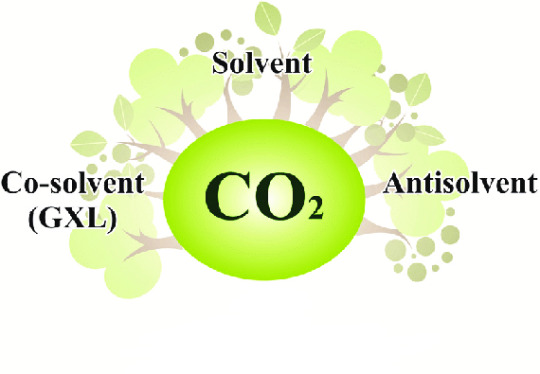#EmissionsReduction
Explore tagged Tumblr posts
Text

I support the new clean auto rules! And I oppose defunding climate policies!
316 so far! Help us get to 500 signers!
I am thrilled that the U.S. finalized strong climate change rule for cars yesterday. These rules will force automakers to ramp up electric vehicle sales and slash emissions from gas-powered models. The rule also would reduce fine particulate matter — the most risky form of pollution to our health. Only seven countries met global guidelines for it last year. The fact that the U.S. is leading the world on climate action is great news!
I know that fossil fuel companies are likely to challenge this rule. I want you to stand with the Biden administration and fight back. We are in a climate emergency and we are losing. We need to do much, much more to avoid the worst consequences of a warming planet. This strong rule is a needed next step. I expect Congress to back it and do even more.
As for the Republicans’ trying to defund President Biden’s green tax credits? Absolutely unacceptable. I consider it an outrage that GOP lawmakers are putting oil and gas companies’ profits above our children’s futures. They need to stop right now. Thanks.
▶ Created on March 21 by Jess Craven
📱 Text SIGN PJFSWW to 50409
🤯 Liked it? Text FOLLOW JESSCRAVEN101 to 50409
#JESSCRAVEN101#PJFSWW#resistbot#ClimateChange#CleanAutoRules#EnvironmentalProtection#ElectricVehicles#EmissionsReduction#AirQuality#PublicHealth#ClimateAction#open letter#GlobalLeadership#FossilFuel#ClimateEmergency#BidenAdministration#CongressionalSupport#GreenTaxCredits#petition#RepublicanParty#Defunding#OilAndGas#FutureGenerations#ClimateCrisis#CarbonEmissions#RenewableEnergy#PolicySupport#ClimatePolicy#EnvironmentalJustice#Sustainability
6 notes
·
View notes
Text

🌍 63 countries, including the US, Canada, and Kenya, commit to slashing cooling-related emissions at #COP28! The Global Cooling Pledge aims to cut emissions by 68% by 2050. A pivotal step towards sustainable cooling tech for a cooler, greener future.
#ClimateAction#GlobalCooling#COP28#SustainableFuture#EmissionsReduction#ClimateChange#GreenTechnology#EnvironmentalProtection#RenewableEnergy#GlobalGoals#Geohoney
6 notes
·
View notes
Text
#CarbonCapture#CCUS#CarbonUtilization#CarbonStorage#EmissionsReduction#NetZero#CleanEnergySolutions#ClimateTech#Decarbonization#CarbonNeutrality#SustainableTech#GreenInnovation#CarbonManagement
0 notes
Text
#BorgWarner.#EGR#CleanTechnology#EmissionsReduction#AutomotiveInnovation#Sustainability#FutureOfMobility#GreenTransport#OEM#VehicleEfficiency#electronicsnews#technologynews
0 notes
Text
#BorgWarner#EGR#CleanTechnology#EmissionsReduction#AutomotiveInnovation#Sustainability#FutureOfMobility#GreenTransport#OEM#VehicleEfficiency#electricvehiclesnews#evtimes#autoevtimes#evbusines
0 notes
Text
Telematique Limited is your reliable partner for sourcing top-grade EN 590 diesel fuel, conforming to the latest European standards for ultra-low sulfur diesel (ULSD). As a trusted supplier, we ensure that all EN 590 fuel deliveries meet strict industry regulations, offering superior performance, fuel efficiency, and reduced environmental impact across various industrial and commercial applications.
#EN590#DieselFuel#FuelStandards#QualityDiesel#SustainableFuel#CleanEnergy#PetroleumIndustry#MotorFuel#Transportation#EnergyEfficiency#FuelTesting#VehiclePerformance#EnvironmentallyFriendly#ClimateAction#FuelRegulations#Automotive#GreenEnergy#AdvancedBiofuels#EmissionsReduction
0 notes
Text
📢 CARBONXT (ASX: CG1) STRENGTHENS CLEANTECH LEADERSHIP, EXTENDS SHARE PURCHASE PLAN 🌱⚡

Carbonxt Group Limited (ASX: CG1) is accelerating its position as a leader in industrial decarbonisation, unveiling strategic advancements at the Ignite Investment Summit in Hong Kong while extending its Share Purchase Plan (SPP) to 3 April 2025.
🔬 Advancing Cleantech for Industrial Sustainability
With increasing regulatory focus on emissions reduction and industrial purification, Carbonxt’s high-performance activated carbon solutions are gaining traction across key sectors:
✔ Mercury Emissions Control – Enabling coal-fired power plants to meet stringent environmental mandates ✔ Wastewater Treatment – Removing heavy metals and organic contaminants from industrial discharge ✔ Biogas Purification – Enhancing energy efficiency by capturing hydrogen sulfide and volatile organic compounds ✔ Air Purification – Industrial applications in cement plants, waste incineration & manufacturing
At the Ignite Investment Summit, Managing Director Warren Murphy reinforced Carbonxt’s commitment to scalable, high-efficiency cleantech solutions, as demand surges for sustainable industrial transformation.
🔹 Share Purchase Plan Extended – Now Closing 3 April 2025
In a strategic move to support expansion and innovation, Carbonxt has extended its SPP deadline from 27 March 2025 to 3 April 2025, providing investors additional time to participate in the Company’s growth trajectory in global emissions control markets.
📈 Investor Outlook:
With a strong market position, regulatory tailwinds, and proprietary technology, Carbonxt is well-positioned to capture growth in clean energy, industrial sustainability, and emissions reduction.
💰 ASX: CG1 is currently trading at $0.053, reflecting growing investor confidence in its expanding market reach and technological advancements.
📍 Read more: https://shorturl.at/rm7Iu https://shorturl.at/LBFe5
⚠️ This is not investment advice. Please do your own research before making any investment decisions.
#Carbonxt#ASXCG1#Cleantech#Sustainability#IndustrialInnovation#ActivatedCarbon#CleanEnergy#EmissionsReduction#AirPurification#WastewaterTreatment#BiogasPurification#CarbonCapture#GreenTech#ClimateSolutions#IndustrialSustainability#EcoInnovation#Decarbonisation#SustainableInvesting#MarketUpdate#InvestorNews#EnvironmentalSolutions
0 notes
Text
𝐂𝐚𝐫𝐛𝐨𝐧 𝐅𝐨𝐨𝐭𝐩𝐫𝐢𝐧𝐭 𝐌𝐚𝐧𝐚𝐠𝐞𝐦𝐞𝐧𝐭 𝐌𝐚𝐫𝐤𝐞𝐭 𝟐𝟎𝟐𝟒-𝟐𝟎𝟑𝟐: 𝐆𝐥𝐨𝐛𝐚𝐥 𝐑𝐞𝐬𝐞𝐚𝐫𝐜𝐡-IndustryARC™
𝐑𝐞𝐩𝐨𝐫𝐭 📄📈 𝐑𝐞𝐪𝐮𝐞𝐬𝐭 𝐟𝐨𝐫 𝐒𝐚𝐦𝐩𝐥𝐞 𝐂𝐨𝐩𝐲
In the face of escalating environmental concerns and stringent regulations, the Carbon Footprint Management Market is witnessing significant growth. Valued at approximately USD 9.7 billion in 2023, the market is projected to reach USD 16.9 billion by 2032, with a Compound Annual Growth Rate (CAGR) of 6.4% during the 2024–2032 period.
Our comprehensive report delves into both quantitative and qualitative facets of the Carbon Footprint Management Market, offering insights into manufacturers, regional analyses, types, and applications. It also features detailed company profiles, product examples, and market share estimates for leading competitors in 2024.
Segment-wise growth calculations and forecasts for consumption value are presented for the period 2024–2032, aiding businesses in targeting specific and lucrative market niches for expansion of the Carbon Footprint Management Market.
𝐓𝐨 𝐊𝐧𝐨𝐰 𝐆𝐥𝐨𝐛𝐚𝐥 𝐒𝐜𝐨𝐩𝐞 𝐚𝐧𝐝 𝐃𝐞𝐦𝐚𝐧𝐝 𝐨𝐟 𝐂𝐚𝐫𝐛𝐨𝐧 𝐅𝐨𝐨𝐭𝐩𝐫𝐢𝐧𝐭 𝐌𝐚𝐧𝐚𝐠𝐞𝐦𝐞𝐧𝐭 𝐌𝐚𝐫𝐤𝐞𝐭 .
Market Segmentation:
By Type: Software, Services
By Application: Manufacturing, Energy and Utilities, Residential and Commercial Buildings, Transportation and Logistics, IT and Telecom
By Region: North America, Europe, Asia-Pacific, South America, Middle East & Africa

#carbonfootprint#sustainability#environmentalmanagement#climatechange#greenhousegas#emissionsreduction#carbonmanagement#ecofriendly#sustainablebusiness#environmentalimpact#carbonaccounting#carbonemissions#carbonneutrality#carbonoffsetting#carbonreduction#carbontracking#carbonreporting#carbonstrategy#carbonsolutions#carboncalculator
0 notes
Text
#greensteel#sustainablesteel#ecofriendlysteel#renewablesteel#carbonneutralsteel#cleansteel#circulareconomy#lowcarbonsteel#greenmanufacturing#climateaction#sustainableindustry#greentechnology#emissionsreduction#sustainablematerials#greenbuilding#ecofriendlyconstruction#sustainableinfrastructure
0 notes
Text

Pressure is on to reduce emissions? Our high-pressure vessels are up to the challenge. They withstand demanding environments while optimizing our technologies to capture and reduce harmful emissions.
Learn More
0 notes
Text
World Environment Day: Prime Minister's Statement

On World Environment Day, Prime Minister Justin Trudeau issued a statement reaffirming Canada's dedication to protecting the environment for current and future generations. The statement emphasizes the urgent need to address the alarming impacts of climate change, pollution, and biodiversity loss. "It is our collective responsibility to protect, restore, and preserve the environment for our children and grandchildren," "From combatting unprecedented wildfires to ensuring clean air and fresh water, we remain steadfast in doing whatever it takes to protect our planet." Trudeau stated. The Prime Minister highlighted several of Canada's key environmental goals and initiatives: Conserving 30% of lands and oceans by 2030 Implementing carbon pricing, including on the biggest polluters, and returning money to Canadians through the Canada Carbon Rebate Investing in clean energy industries through measures like the new Electric Vehicle Supply Chain investment tax credit announced in Budget 2024 Partnering with Indigenous Peoples, including $800 million in investments for Indigenous-led conservation initiatives "Protecting the planet isn't just about having clean air and fresh water today. It's also about fairness – about making sure we can pass on the Canada we know and love to future generations," Trudeau emphasized. He invited all Canadians to reflect on how even small actions like reducing, reusing, recycling and taking public transit can help safeguard the environment. Canada's ambitious climate plan aims to reduce greenhouse gas emissions 40-45% below 2005 levels by 2030. Key measures span all sectors of the economy: Increasing the federal carbon price to $170/tonne by 2030 Mandating 20% of new vehicle sales be zero-emission by 2026, rising to 100% by 2035 Launching a $150 million Green Buildings Strategy to drive energy efficiency retrofits Implementing an emissions cap on the oil and gas sector Investing $780 million in nature-based climate solutions like afforestation and improved land management On World Environment Day, the Prime Minister's statement serves as a call to action, highlighting the responsibility we all share in preserving our environment and building a sustainable future for generations to come. Sources: THX News & The Canadian Government. Read the full article
#biodiversityloss#CanadaCarbonRebate#carbonpricing#cleaneconomy#cleanenergy#climatechange#Emissionsreduction#Environmentalprotection#Indigenous-ledConservation#PrimeMinisterstatement
0 notes
Link
British Airways is soaring towards a greener future with a multi-million-pound investment in sustainable ground operations at London Heathrow Airport. This ambitious initiative signifies the airline's unwavering commitment to reducing its environmental footprint, not just in the skies, but also on the ground. A Multi-Pronged Approach to Greener Ground Operations The multi-faceted plan focuses on replacing traditional, fossil-fuel-powered ground support equipment with cleaner alternatives. Here's a closer look at the key components of this green transformation: Embracing HVO Fuel: Over 90% of British Airways' ground equipment at Heathrow is already using cleaner burning options. This includes a significant shift towards Hydrotreated Vegetable Oil (HVO) fuel, a sustainable alternative to conventional diesel. HVO is expected to contribute to a reduction of over 6,000 tonnes of CO2 emissions annually – equivalent to removing more than 8,000 round-trip economy flights between London and New York! Electrifying Passenger Steps: British Airways is phasing out diesel-powered passenger boarding stairs, replacing them with electric alternatives. This move is projected to cut fuel consumption by over 370 tonnes of CO2 emissions per year, which translates to the environmental benefit of eliminating more than 500 round-trip economy flights between London and New York. Many of these electric units will be operational by the end of 2024. Hybrid Power for Cargo Handling: The airline is bidding farewell to its fleet of diesel-powered cargo loaders, opting for hybrid electric models instead. This shift promises greater efficiency and a significant reduction in emissions. Efficient Electric Baggage Tugs: British Airways is significantly boosting its electric baggage tug fleet, introducing 135 new units. These tugs boast advanced battery and charging technology, utilizing lithium-ion batteries for reduced energy consumption and a 30% CO2 reduction compared to traditional lead-acid batteries. Additionally, the airline is committed to responsible battery recycling at the end of its lifespan. Electrifying Passenger Buses: Recognizing the environmental impact of ground transportation, British Airways is gradually phasing out its entire fleet of diesel passenger buses over the next two years. This plan involves replacing 23 buses with fully electric models, while the remaining 15 will operate on HVO fuel. A dedicated charging park at Heathrow is currently under development to support the electric buses. This shift is expected to save an estimated 800 tonnes of CO2 emissions annually, contributing to cleaner air around Heathrow. British Airways' Environmental Leadership Quotes: Tom Moran, British Airways' Director of Heathrow: "Our focus isn't just about reducing emissions in the air, but on the ground too. This major investment... is part of our wider environmental objective to minimize emissions... We're proud of the work we are doing..." Carrie Harris, British Airways' Director of Sustainability: "I am incredibly proud of this project... This investment demonstrates our ongoing commitment to making improvements..." These improvements align with British Airways' broader £7 billion investment plan aimed at transforming various aspects of its business over the next three years. Notably, this initiative builds upon previous efforts to reduce ground emissions, such as introducing electric and hybrid vehicles for airside staff transportation, employing remote-controlled pushback vehicles for short-haul flights, and utilizing ground power units for parked aircraft at Heathrow. British Airways Takes Responsibility for a Sustainable Future British Airways' commitment to sustainable ground operations at Heathrow showcases the airline's dedication to environmental responsibility. This multi-pronged approach, encompassing a shift towards HVO fuel, electric and hybrid ground equipment, and a complete overhaul of the passenger bus fleet, represents a significant step towards a greener future for air travel. By prioritizing sustainability, British Airways demonstrates its leadership within the industry and its commitment to minimizing its environmental impact for the benefit of travelers and the planet. FAQs: Q: What is HVO fuel? A: Hydrotreated Vegetable Oil (HVO) is a renewable and sustainable alternative to conventional diesel fuel. It is produced from vegetable oils and fats and offers a significant reduction in greenhouse gas emissions. Q: How many electric baggage tugs is British Airways introducing? A: British Airways is adding 135 new electric baggage tugs to its fleet at Heathrow. Q: When will all the electric passenger boarding stairs be operational? A: Many of the electric passenger boarding stairs are expected to be fully operational by the end of 2024. Q: How will the transition to green vehicles impact emissions? A: Transitioning to eco-friendly vehicles and equipment is expected to significantly reduce carbon emissions, contributing to British Airways' sustainability objectives. Q: What are the environmental benefits of electric baggage tugs? A: Electric baggage tugs utilize advanced battery technology to reduce energy consumption and CO2 emissions compared to traditional models, promoting environmental conservation.
#BritishAirways#BritishAirwaysTakesFlight#carbonfootprint#ecofriendlyvehicles#emissionsreduction#greentechnology.#groundoperations#HeathrowAirport#sustainability
0 notes
Text
Carbon Dioxide Market Evolution: From Emissions Regulation to Renewable Energy Integration
The global carbon dioxide market size is expected to reach USD 15.46 billion by 2030, expanding at 5.0% CAGR from 2024 to 2030, according to a new report by Grand View Research, Inc. The growth is majorly driven by the increasing usage of CO2 for enhanced oil recovery (EOR) in oil & gas plants.carbon dioxide (CO2) is considered to be among the major and most extensively utilized medical gases. Furthermore, in the medical industry, CO2 is used in respiratory and cryotherapy stimulation during the process and post-anesthesia application. In cryotherapy, CO2 in frozen form (–78.5 °C) is used for killing body cells via a crystallization process. This gas can also be used in several processes to remove moles, skin tags, and warts.

Carbon Dioxide Market Report Highlights
Ethyl alcohol dominated the source type by accounting for a revenue share of 33.0% in 2023. It is projected to grow at the highest growth rate of 5.2% from 2024 to 2030 owing to its reliability as an easily available long-term source and high commercial value in producing CO2 as a by-product
Further, growth in demand for food-grade carbon dioxide in the forecast period will boost the growth of the production of carbon dioxide from ethyl alcohol
The food and beverages application segment of the market is anticipated to grow at a CAGR of 5.7% from 2024 to 2030, by revenue, thanks to rising demand for carbonated drinks globally
North America accounted for the largest revenue share of 42.0% of the CO2 industry in 2023. It is expected to continue its dominance over the forecast period. This can be attributed to increasing R&D, expansion of the industrial sector & growth of enhanced oil recovery processes
For More Details or Sample Copy please visit link @: Carbon Dioxide Market Report
CO2 also finds application in modern medicine to minimize invasive surgeries. In medicinal baths, it induces warm sensations and acts as a vasodilator for the skin by stimulating its heat receptors. In addition, insufflation with CO2 makes it easier to perform endoscopic procedures.
CO2 can be produced and recovered through various sources such as ethyl alcohol, hydrogen, ethylene oxide, substitute natural gas, and various other sources. Further, current research & development to capture carbon emissions has gained momentum. New research and development do not only aim to capture the CO2 in the form of carbon emissions but to refine and reuse it for some applications.
The carbon capture and storage (CCS) technology is capable of delivering considerable emission reductions from the utilization of fossil fuels. It is capable of lowering emissions from a wide range of industries such as power generation, steel, iron, refining, petrochemicals, and cement manufacturing. CCS technologies include capture, transport, and storage. Capture technology includes post-combustion, pre-combustion, oxy-firing, and industrial separation.
The key players in this industry are Air Products and Chemicals Inc.; Messer SE & Co. KGaA; Air Liquide; Linde Plc to maintain the market, share. Large firms frequently engage in mergers and acquisitions as well as new product launches. For instance, In September 2022, Covestro and SOL Kohlensäure GmbH & Co. KG signed a memorandum of understanding for collaboration in regards to the supply of biogenic CO2, effective from September 2022.
#CarbonDioxideMarket#CarbonDioxide#CO2#CarbonTrading#CarbonOffsets#CarbonCapture#EmissionsReduction#GreenEconomy#CarbonMarket#Decarbonization#ClimateFinance#LowCarbonFuture#EmissionsTradingSystem#CarbonFinance
0 notes
Text
#Decarbonization#NetZero#CarbonReduction#CleanEnergy#GreenTransition#SustainableFuture#ClimateAction#LowCarbonEconomy#CarbonNeutral#EnergyTransition#RenewableEnergy#GreenTech#EmissionsReduction
0 notes
Text
Urbanizing India: Impact on energy demand and climate
In conversation with India Energy Hour, Siddharth Singh, Co-Lead author of India energy outlook 2021, takes a deep dive into India's urbanization fuels rising energy demand, particularly from air conditioning, necessitating energy efficiency and innovative cooling solutions to tackle climate change, emphasizing the dual importance of efficient appliances and sustainable urban transportation in emissions reduction and responsible development.
The India Energy Hour
India's relentless urbanization is accelerating its energy requirements. With a burgeoning population and a burgeoning middle class, the country's energy demand is set to assume a pivotal role on the global energy stage. This dialogue between Shreya Jai and Siddharth Singh illuminates the intricate interplay between urbanization, energy consumption, and climate change mitigation in India.
Tune in to the full episode to find out more!
Available on major podcast platforms and our website

#IndiaEnergyOutlook#Urbanization#EnergyDemand#ClimateChange#AirConditioning#EnergyEfficiency#InnovativeCooling#SustainableTransport#EmissionsReduction#GlobalEnergy
0 notes
Text
Retrofitting an emission

Retrofitting an emission control device for a diesel generator (DG) set is a common approach to reduce the harmful emissions produced by these engines. Diesel generators are known to emit pollutants such as nitrogen oxides (NOx), particulate matter (PM), sulfur dioxide (SO2), and carbon monoxide (CO), which have adverse effects on air quality and public health. Retrofitting emission control devices helps mitigate these negative impacts.
There are several emission control devices that can be retrofitted onto a DG set:
Selective Catalytic Reduction (SCR) System: An SCR system reduces nitrogen oxides (NOx) emissions by using a catalyst to convert NOx into nitrogen and water vapor. It requires injecting a urea-based reductant (often called AdBlue or DEF) into the exhaust stream before it enters the catalyst.
Diesel Particulate Filter (DPF): A DPF traps and collects particulate matter (PM) from the exhaust gases. Over time, the accumulated particles are burned off through a process called regeneration, which can be passive or active.
Oxidation Catalyst: An oxidation catalyst promotes the oxidation of carbon monoxide (CO) and hydrocarbons (HC) into less harmful compounds like carbon dioxide (CO2) and water vapor.
Closed Crankcase Ventilation (CCV) System: This system captures and recirculates gases from the crankcase, preventing unburned hydrocarbons and other volatile organic compounds from being released into the atmosphere.
Lean NOx Trap (LNT): Similar to an SCR system, an LNT system captures and stores nitrogen oxides during lean conditions and then releases them and reduces them to nitrogen during rich conditions.
When retrofitting an emission control device onto a DG set, several considerations must be taken into account:
Compatibility: Ensure that the chosen emission control technology is compatible with the specific DG set model and its operating conditions.
Space and Installation: Some emission control devices may require additional space for installation. It's important to evaluate if the DG set has the necessary physical space to accommodate the chosen device.
Maintenance: Regular maintenance of the emission control system is crucial for its effective operation. This includes cleaning, regeneration, and occasional replacement of components.
Performance Impact: Depending on the emission control technology, there might be a slight reduction in engine efficiency or power output. It's important to assess the potential impact on DG set performance.
Compliance: Make sure to follow local regulations and emission standards when selecting and installing emission control devices. Different regions may have varying emission limits and requirements.
Cost-Benefit Analysis: Retrofitting emission control devices involves costs related to purchasing, installation, and maintenance. Conduct a cost-benefit analysis to evaluate whether the investment is justified by the emission reductions achieved.
Before proceeding with retrofitting, it's recommended to consult with experts in the field of emission control and work closely with manufacturers or suppliers who specialize in retrofitting emission control devices for diesel generators.
0 notes